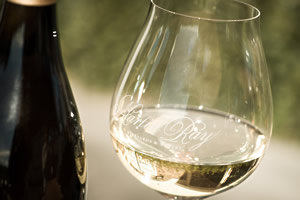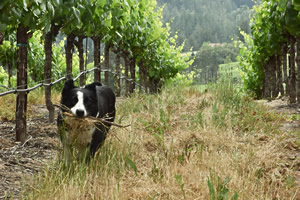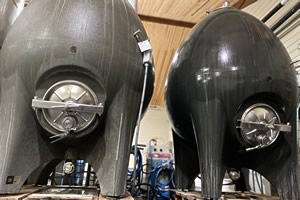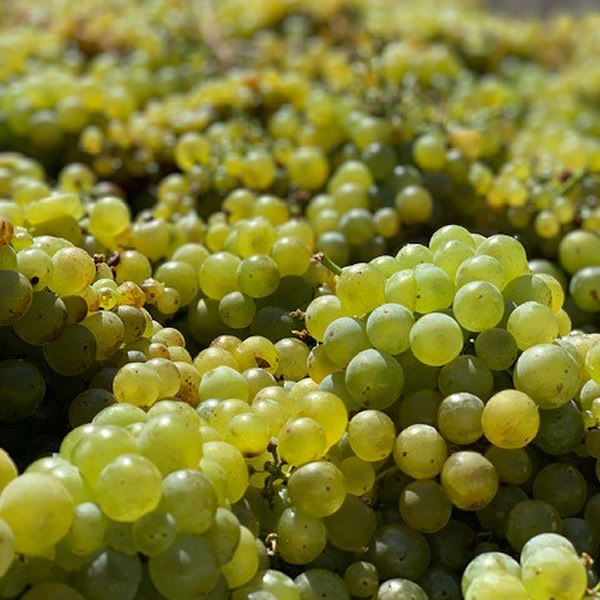Concrete Chardonnay: Concrete Eggs, The Dodo Bird, and The Vortex
The 2019 Martin Ray concrete chardonnay. It has a nice ring to it. The tasting notes for the 2019 concrete chardonnay read like a dream.
Vibrant Eureka lemon zest. Fresh peach. Good acidity. Racy minerality with touches of Acacia flower. Subtle pear. Underripe nectarine. Linear palette.
We are producing this unoaked chardonnay in concrete eggs. The eggs are about twelve feet high. They look like snub-nosed cartoon rockets. Like gigantic urns. Like eggs with four legs. Owner Courtney Benham decided to buy the eggs because he “dug the shape.”
The eggs are just part of the story. Like all wine, it starts with grapes.
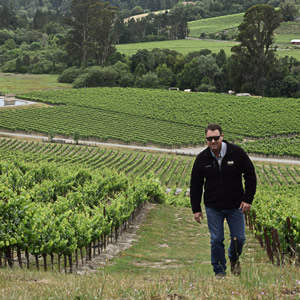
We source the chardonnay from Mill Station Vineyard at Dutton Ranch. Dutton Ranch is just down the road from Martin Ray in the Green Valley of the Russian River. The Duttons, the namesake of Dutton Ranch, have farmed Sonoma County since 1881, when Warren Dutton bought 200 acres of land in Santa Rosa and planted plum trees to make prunes.
In 1967, Warren Dutton’s grandson Warren Dutton Jr. and Gail Dutton, his wife, bought 35 acres west of Graton and planted grapes. Al Steele who manages Vineyard Relations at Dutton Ranch said, “Warren planted at the shop [the Dutton’s house in Graton] and everybody thought he was crazy.” Everybody was wrong. In 1983, Green Valley’s supposed faults became its terroir when it was recognized as an AVA.
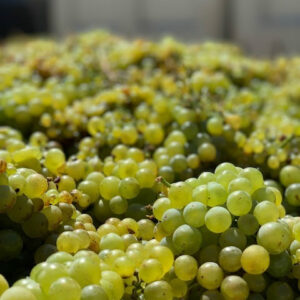
Too cool? Those cool nights are perfect for chardonnay. Morning fog creeps in through the Petaluma Gap. The fog burns off by about 10 in the morning. The sun gets high; the day gets hot; the grapes produce sugar and respire acid. In other words, they ripen. The sun sets behind the Coastal Range; a breeze picks up; it’s the fog again. The temperature drops to around 50° F, the grapes stop producing sugar and start retaining acid. These consistently cool nights lengthen the growing season, which Al refers to as “a long hang time.” The long growing season allows the chardonnay to get golden and develop steely, grapefruity, apple flavors. This is a style of growing that allows for fruit-forward winemaking.
In early September, the chardonnay is ready for harvest. The grapes are handpicked overnight. In the morning, the Duttons drive the grapes north on Gravenstein Highway to Martin Ray Winery. Immediately, the grapes are pressed whole-cluster – this process allows the fresh juice to filter through the stems. Then, the juice sits in small portable stainless steel tanks for one night. The next day, we rack the juice into the concrete eggs. This racking removes heavy lees. The juice is home for the next eight months. We inoculate the juice to enhance the primary fermentation, which takes about ten days.
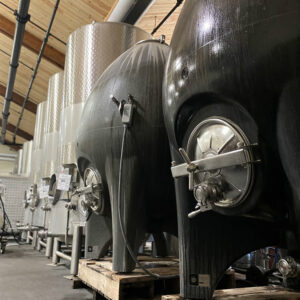
The eggs are far from the first concrete on the property. Dating back to the 1930s there were large open-top concrete fermenters in the warehouses. In the ’70s, stainless steel started to replace concrete. Stainless steel was considered superior, because it was, and still is, easier to clean than concrete. It was easier to refrigerate than concrete and came in more tank sizes. In 2011, we tore out the last of the concrete fermenters. Concrete had gone the way of the dodo bird. Until 2017, when Courtney Benham purchased two eggs from Sonoma Cast Stone. He bought two more in 2018.
Concrete is the best of stainless steel and oak. It breathes like oak, but, doesn’t impart oak flavor onto the wine. Saying concrete breathes means it oxygenates the wine. The inner surface of the concrete is porous. These pores trap oxygen. When the tank is filled, the trapped oxygen seeps into the wine, catalyzing fermentation and breaking down tannins for a smoother mouthfeel. As long as these vessels are treated before filling to prevent acid from leaching into it and it’s cleaned properly, concrete can last forever. Whereas, barrels only last about five years.
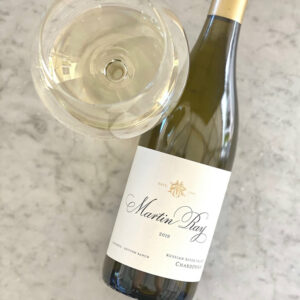
The egg creates a vortex that constantly stirs the wine and suspends the lees. The vortex is created by a temperature gradient inside the egg. The wine at bottom of the egg heats up and rises. The narrower top of the egg increases pressure and the rising wine accelerates. At the surface, the wine cools and sinks down the smooth sides of the egg to the bottom to heat up again and rise again and fall again and rise again and again and again. This constant rise and fall. Leslie says, “The rolling fills out the mid-palate and gives the wine fullness.”
The egg makes the wine on its own. “Personnel-wise it’s a life-saver because nobody has to go do a pump-over or punch-down,” Leslie said.
We keep the eggs chilled in order to prevent malolactic fermentation. Malolactic fermentation produces diactyl, the same chemical that Orville Redenbacher uses to make butter flavor, which would drown out the steeliness, minerality, apple, Eureka lemon, that Dutton Ranch terroir. In April, after eight months of rolling around the egg, the wine is filtered to remove the lees and promptly bottled. By summer it is ready to drink. Chill it down. We drink it at 34° F on hot days. We drink it with or without food. In fact, one of the only white wines Courtney enjoys without food. Pair with fish and friends. You decide which to eat.
